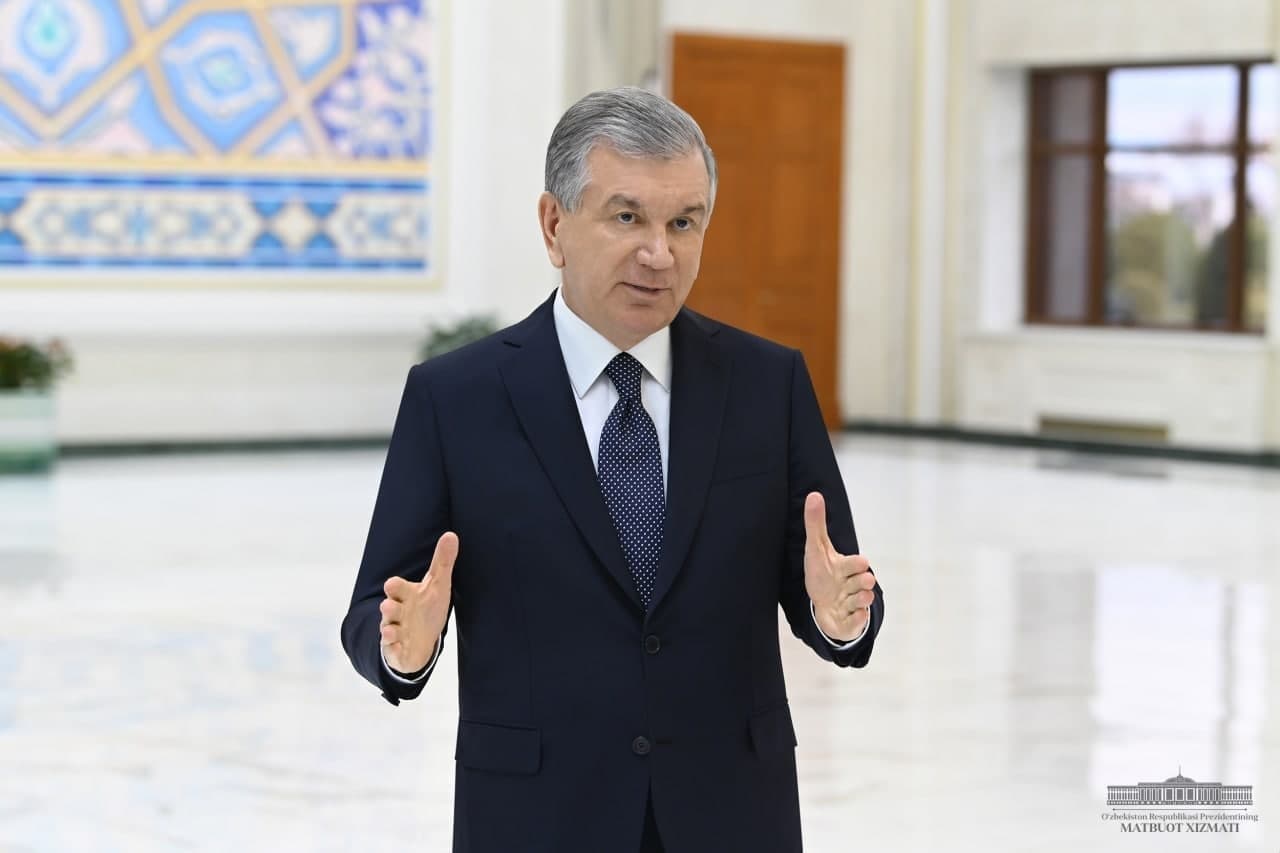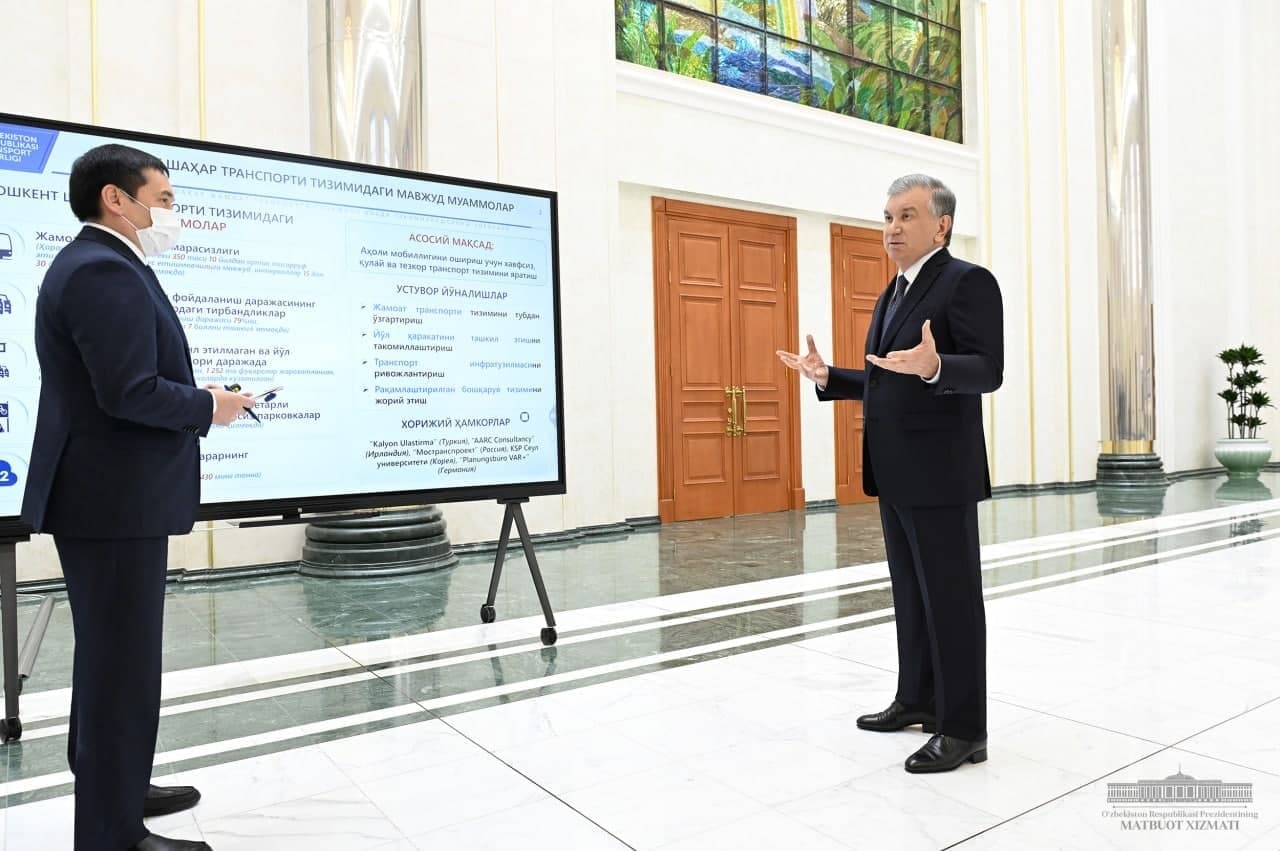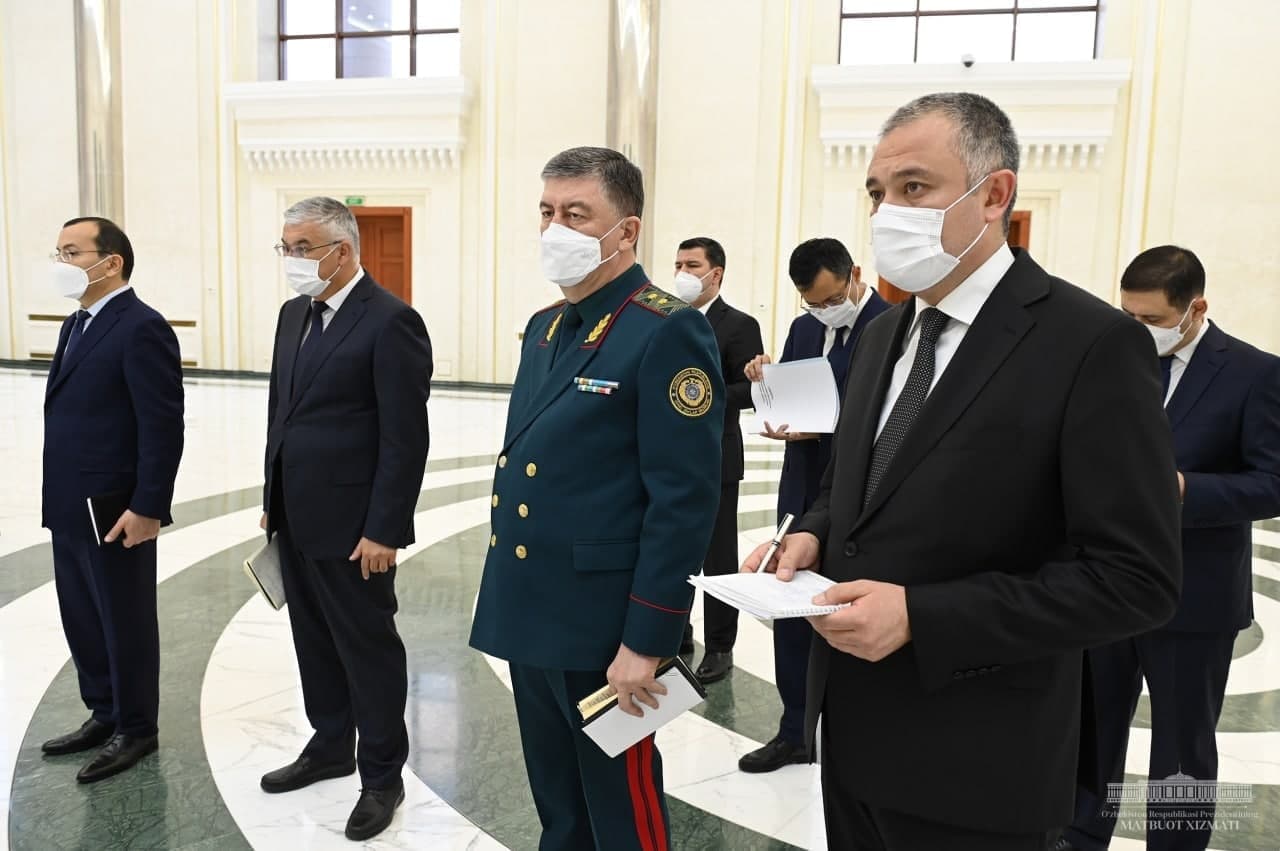
19.01.2022
On January 19 President Shavkat Mirziyoyev was briefed on the measures to develop public transport in Tashkent.
A comfortable public transport is a necessary attribute of a modern city. However, this issue has become an urgent problem. The deterioration of the bus fleet, the closure of central bus stations and the inefficient connection of routes have created a number of inconveniences for residents.
In addition, over the past five years, the population of the capital city has increased by 300 thousand people and its territory has expanded. Every day, more than a million people come and go to the capital. However, the system of public transport does not correspond to the changes taking place in the capital. The service life of 350 buses exceeds 10 years. There is a shortage of 393 buses. Due to traffic jams on the streets, the interval of buses increases to 30 minutes during rush hours.
As a result, the passengers are justifiably dissatisfied with the services and prefer a private transport. The use of private cars in Tashkent is 79 percent, while the use of public transport is only 21 percent.
At a meeting with voters in Tashkent on October 19 last year Shavkat Mirziyoyev paid a special attention to this issue and stated that the necessary measures will be taken.
The tasks in this direction were discussed at today’s presentation.
The main task of the Ministry of Transport and Tashkent City Khokimiyat (mayor’s office) was defined as increasing of public transport usage twofold. It was emphasized that priority should be given to system approach and easing the people’s movement, providing interconnectivity and complex development of all types of transport, including route, rail transport and subway lines, as well as infrastructure for biking and walking.
It was instructed to build 10 modern stations on the main roads entering Tashkent from the regions, as well as parking lots next to six metro stations with the highest number of passengers.
This year the construction of Kuylyuk-Kipchak elevated metro line will be completed. As a result, there will be conditions for 70 thousand people using cars to use public transport.
Besides, a task is set to create an economic and mathematical model of public transport system based on the forecast of passenger traffic for the next 5 years, as well as enhance the scientific potential of the Transport University.
The number of cars in Tashkent is increasing by 15% a year, with up to 800,000 vehicles per day moving through the city. There are more than 500 major intersections in the capital, most of which have a low capacity. The roads are poorly adapted for pedestrians and bicycling. Due to this, as well as low traffic culture, accidents became more frequent.
The President has stressed the need to increase the capacity and convenience of intersections through proper traffic management. This year, it is planned to implement a traffic control system at 200 intersections, build 180 kilometers of pedestrian and bicycle lanes and create parking lots for 2 thousand cars.
Besides, this year 35 percent of the bus fleet will be renewed. To achieve this, it is set to buy 410 buses and electric buses, and the number of high-capacity buses will be doubled. The need to create the charging stations taking into account the growth of number of electric cars on the roads of the capital is pointed out.
The possibility of improving public transport and transport infrastructure in Tashkent based on a scientifically grounded experience of development of metropolis of Germany and Russia was also told during the presentation.
A special attention is given to the financial rehabilitation of public transport enterprises. The importance of financial audit and transformation of «Toshshahartransxizmat» enterprises was noted.
The public-private partnership should serve as an addition to the budget funds and other sources as a core for the development of the sphere, said President.
The Ministry of Transport and khokimiyat of Tashkent were commissioned to review the concept of development of public transport in the capital city and hold its broad public discussion.
It was stressed that the experience of the capital city and scientific approach will be applied in the improvement of public transport at all regional centers taking into account the number, places of work and residence of the population and specifics of development.







